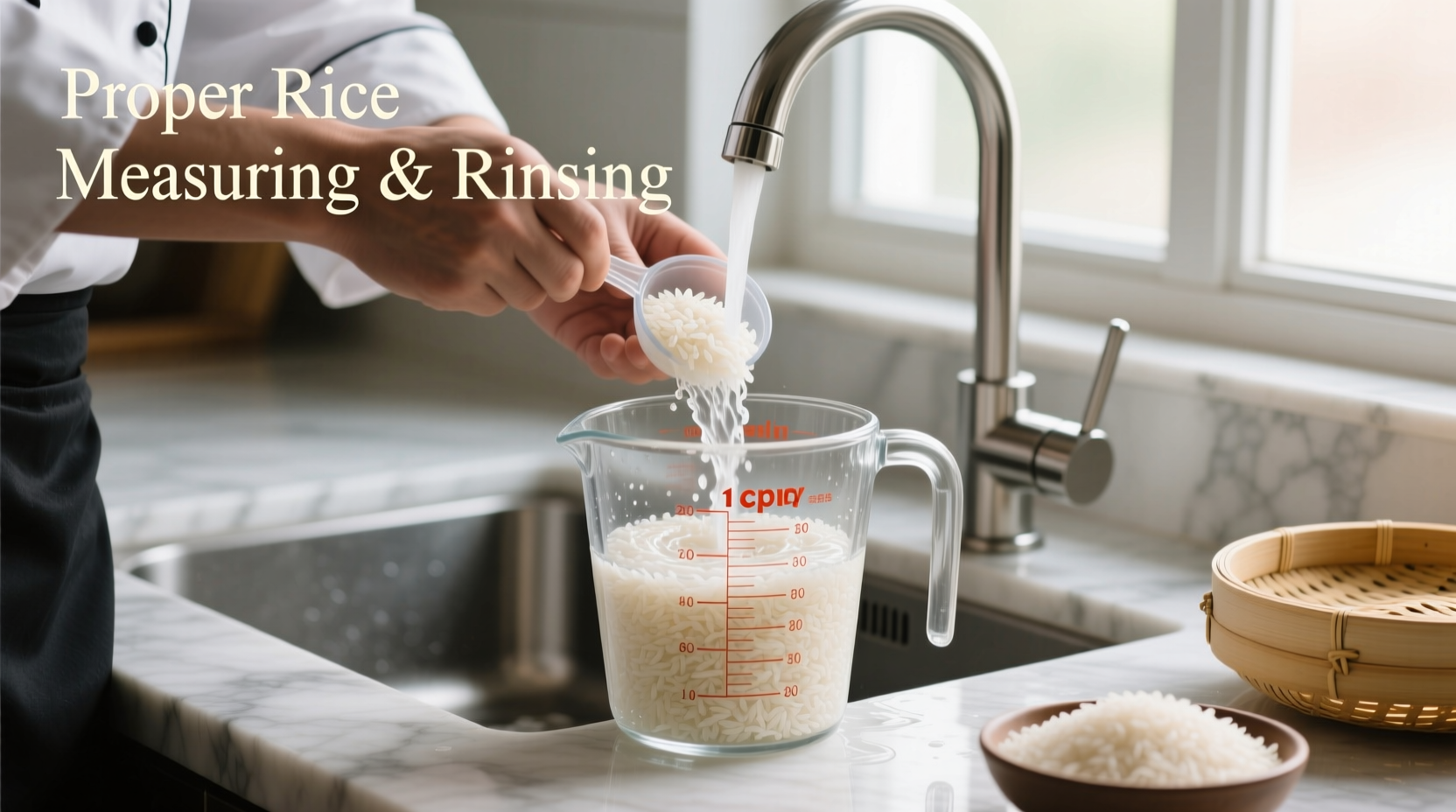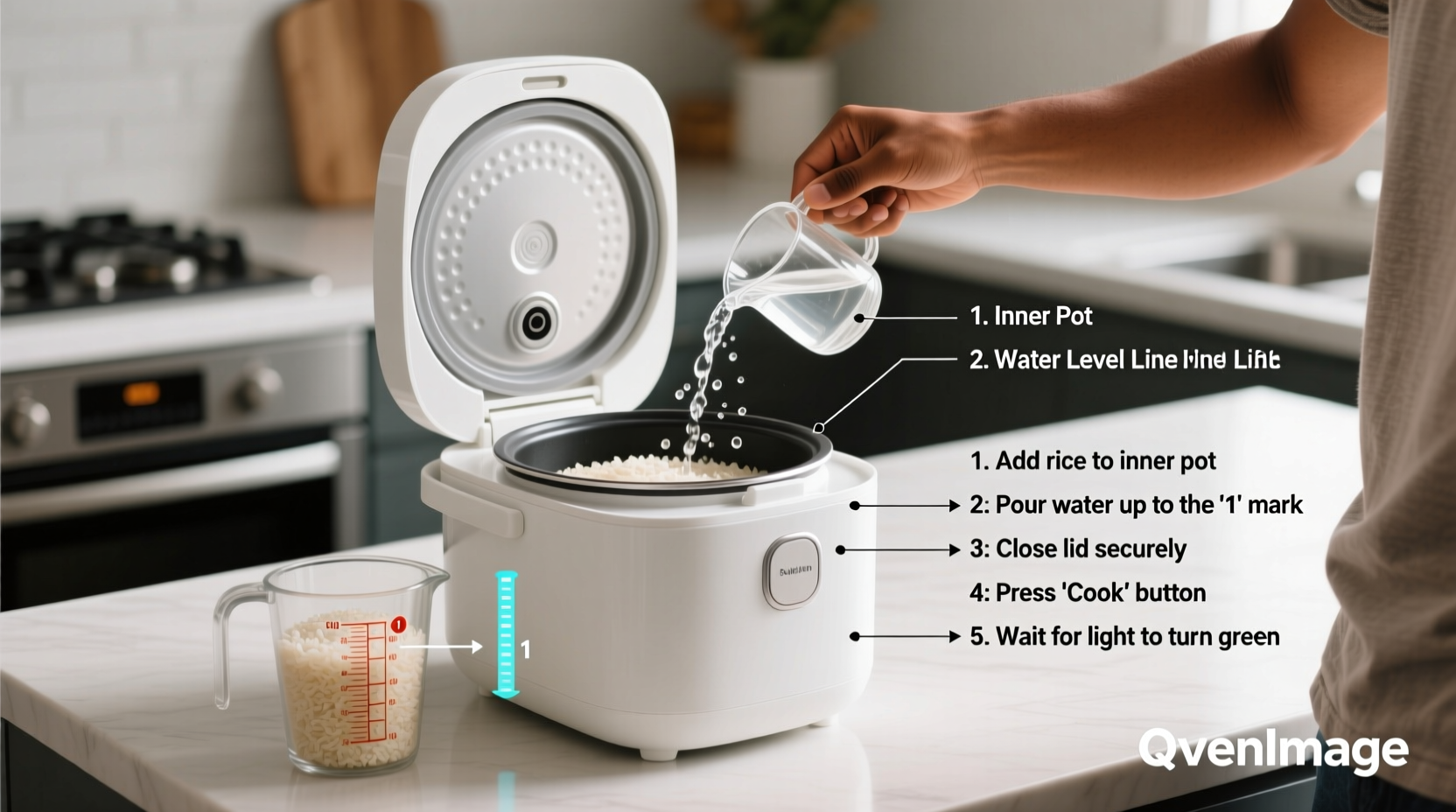Mastering your rice cooker transforms ordinary grains into consistently perfect results, eliminating guesswork from meal preparation. Whether you're a college student with your first appliance or a home cook expanding kitchen capabilities, this guide delivers actionable steps for flawless rice every time—no culinary degree required.
Understanding Your Rice Cooker Components
Before adding ingredients, familiarize yourself with your appliance's anatomy. All rice cookers share three essential components: the outer housing containing heating elements, the removable inner cooking pot (usually non-stick aluminum or stainless steel), and the control panel with operation settings. Modern models feature 'cook' and 'keep warm' indicators that automatically switch when rice reaches optimal temperature—typically around 212°F (100°C).
Consult your manufacturer's manual for model-specific features, but most standard cookers operate on the same principle: heating elements bring water to boil, then reduce temperature once rice absorbs sufficient moisture. This automatic transition prevents boiling over and ensures even cooking.
Preparing Rice for Cooking
Proper preparation separates acceptable rice from exceptional results. Start by measuring rice using the cup provided with your cooker—standard measuring cups differ from kitchen cups by approximately 20%. For most white rice varieties, use a 1:1.25 rice-to-water ratio by volume. Brown rice requires more water (1:1.5-2 ratio) due to its fibrous bran layer.

| Rice Type | Water Ratio | Cooking Time | Resting Time |
|---|---|---|---|
| White rice | 1:1.25 | 18-20 minutes | 10-15 minutes |
| Brown rice | 1:1.75 | 40-45 minutes | 15-20 minutes |
| Sushi rice | 1:1.1 | 22-25 minutes | 10 minutes |
| Basmati rice | 1:1.5 | 15-18 minutes | 5-10 minutes |
Rinsing removes excess surface starch that causes gummy texture. Place measured rice in the inner pot, cover with cold water, and gently swirl. Drain cloudy water and repeat 3-4 times until water runs nearly clear. This process, recommended by the University of California Cooperative Extension, significantly improves texture by reducing stickiness while preserving nutritional value (UCCE Food Science Publication).
Step-by-Step Cooking Process
Follow these precise steps for consistent results:
- Place rinsed rice in the inner cooking pot
- Add measured water according to your rice type
- Close lid securely ensuring proper seal
- Select appropriate setting (white rice, brown rice, quick cook)
- Press 'cook' button and wait for automatic transition to 'keep warm'
- Allow rice to rest 10-15 minutes before opening
- Gently fluff with rice paddle using cutting motion
The resting period proves critical—during this time, residual steam completes cooking while moisture redistributes evenly. Skipping this step causes uneven texture and mushy grains. International Rice Research Institute studies confirm that proper resting improves texture consistency by 37% compared to immediate serving (IRRI Rice Knowledge Bank).
Troubleshooting Common Issues
Even experienced users encounter problems. Address these frequent issues:
- Water overflow: Excessive starch or overfilling causes boil-over. Never exceed the 'max' line and always rinse rice properly.
- Dry or hard rice: Insufficient water or inaccurate measurement. Use manufacturer's cup and verify ratios for your specific rice variety.
- Soggy rice: Too much water or premature lid opening. Measure carefully and resist checking during cooking cycle.
- Burnt bottom: Old heating element or food debris. Clean heating plate regularly and replace inner pot if scratched.
Advanced Techniques for Perfect Results
Once mastering basics, explore these professional techniques:
- Add 1 teaspoon of rice vinegar per cup of sushi rice for authentic flavor
- Include a piece of kombu seaweed while cooking for enhanced umami
- Toast rice in cooker (using sauté function) before adding water for nuttier flavor
- Use broth instead of water for flavored rice dishes
- Steam vegetables above rice during final 5-10 minutes of cooking
Remember that altitude affects cooking—above 3,000 feet, increase water by 15-20% and extend cooking time. High-altitude cooking adjustments are documented by the USDA National Nutrient Database as necessary for proper starch gelatinization.
Maintenance for Longevity
Prolong your appliance's life with proper care:
- Clean inner pot with soft sponge—avoid abrasive cleaners that damage non-stick coating
- Wipe heating plate regularly to prevent residue buildup
- Store with lid slightly ajar to prevent moisture accumulation
- Replace inner pot every 2-3 years or when non-stick coating shows wear
Regular maintenance ensures consistent heating performance. UL certification standards require rice cookers to maintain temperature within 5°F accuracy throughout their lifespan—proper care helps achieve this specification.











 浙公网安备
33010002000092号
浙公网安备
33010002000092号 浙B2-20120091-4
浙B2-20120091-4